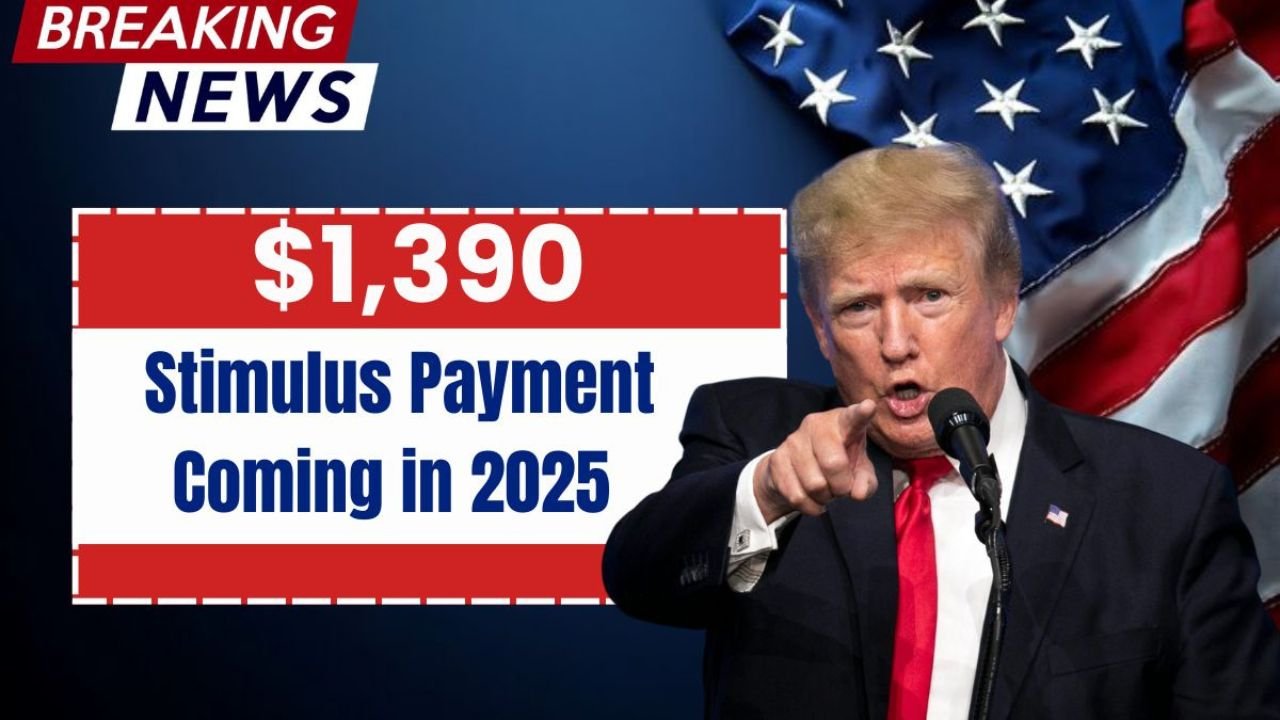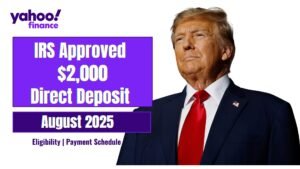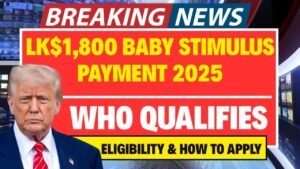The Internal Revenue Service (IRS) has confirmed a $1,390 relief payment for eligible Americans starting in August 2025. This one-time, tax-free payment aims to help low- and middle-income households cope with rising costs due to inflation. Whether you’re a taxpayer or receive federal benefits, this guide explains who qualifies, how to claim the payment, and when to expect it in simple terms.
What Is the $1,390 Relief Payment?
The $1,390 relief payment is a federal initiative to support Americans struggling with high living expenses, such as groceries, rent, and utility bills. It’s not tied to new legislation but is managed by the IRS, similar to previous stimulus checks. The payment is designed to provide quick financial help without affecting other benefits like Medicaid or food stamps.
Key Features of the Relief Payment
| Feature | Details |
|---|---|
| Amount | $1,390 (one-time payment) |
| Taxable? | No, it’s completely tax-free |
| Application Needed? | Not for most; automatic for recent tax filers and benefit recipients |
| Start Date | August 2025 |
| Delivery Methods | Direct deposit, paper check, or prepaid debit card (EIP card) |
Who Qualifies for the $1,390 Payment?
The IRS has set clear rules to determine who gets this relief payment. It targets low- and middle-income individuals, families, and people on certain federal benefits. Below are the main eligibility criteria.
Income-Based Eligibility
To qualify based on income, your adjusted gross income (AGI) from your most recent tax return (2023 or 2024) must be:
- Single filers: $75,000 or less
- Married couples filing jointly: $150,000 or less
- Heads of household: $112,500 or less
Eligibility for Federal Benefit Recipients
Even if your income is above these limits, you may still qualify if you receive:
- Social Security (retirement, SSI, or SSDI)
- Veterans Affairs (VA) benefits
- Railroad Retirement benefits
Additional Eligibility Notes
- Families with dependents: You may receive extra funds for qualifying dependents, like children, though exact amounts are not yet confirmed.
- Non-tax filers: If you don’t file taxes but receive federal benefits, you’re automatically eligible.
- College students and others: Some groups, like dependent college students aged 19-24 or recent widows/widowers, may also qualify under specific conditions.
How to Claim the $1,390 Relief Payment
For most people, no action is needed to get the payment. The IRS will use your latest tax return or federal benefit records to send the money automatically. However, some may need to take steps to ensure they receive it.
Automatic Payments
You don’t need to apply if:
- You filed a 2023 or 2024 federal tax return.
- You receive Social Security, SSI, SSDI, VA, or Railroad Retirement benefits.
The IRS will use your bank details or mailing address on file to send the payment.
Non-Filers: Using the IRS Non-Filer Tool
If you don’t file taxes and aren’t on federal benefits, you’ll need to use the IRS’s Non-Filer Tool to claim your payment. This online tool, expected to launch before August 2025, lets you submit basic information like your name, address, and bank details.
| Situation | Action Needed? |
|---|---|
| Filed recent taxes | No, payment is automatic |
| Receive Social Security/VA benefits | No, payment is automatic |
| No taxes filed, no benefits | Yes, use IRS Non-Filer Tool |
How to Update Your Information
To avoid delays, ensure your bank account and mailing address are up to date:
- IRS Online Account: Log in to your IRS account to verify or update your details.
- Social Security Administration: Update your information if you receive benefits.
- Mailing Address: Confirm your address is correct to receive paper checks or debit cards.
When and How Will the Payment Arrive?
Payments are expected to start in August 2025, with a phased rollout:
- Direct Deposit: Starting August 18, 2025, for those with bank details on file (fastest method).
- Paper Checks: Mailed starting September 1, 2025, to those without bank information.
- EIP Debit Cards: Sent starting September 15, 2025, in plain envelopes labeled “Money Network Cardholder Services.”
Tracking Your Payment
The IRS will update its “Get My Payment” tool in 2025 to let you:
- Check your eligibility.
- See your payment status and delivery method.
- Update your bank or address details.
Visit IRS.gov to access this tool when it’s available.
Is the Payment Taxable or Will It Affect Other Benefits?
Good news: the $1,390 payment is 100% tax-free. It won’t count as income on your next tax return, and it won’t impact eligibility for programs like:
- Medicaid
- SNAP (food stamps)
- Housing assistance
How to Use the $1,390 Payment
There are no restrictions on how you can spend the money, but the IRS suggests using it for essentials like:
- Rent or mortgage payments
- Utility bills (electricity, water, gas)
- Groceries or medical expenses
- Childcare or school costs
- Paying off debts
This relief can help cover one or two major bills, offering peace of mind during tough times.
Avoiding Scams
With the payment announcement, scammers may try to trick you. The IRS will never:
- Ask for payment to “release” your check.
- Send texts or emails with links to claim the payment.
- Request bank or Social Security details via unofficial platforms.
Always use IRS.gov or trusted financial institutions for updates. If you suspect a scam, report it to the IRS immediately.
What If You Don’t Receive Your Payment?
If your payment doesn’t arrive by December 31, 2025:
- File Form 3911: Submit a “Taxpayer Statement Regarding Refund” to trace your payment.
- Claim as a Recovery Rebate Credit: Include it on your 2025 tax return, but don’t wait too long—this option expires after 2025 filings.
Will There Be More Payments in 2025?
The $1,390 payment is a one-time relief effort. However, if inflation worsens or the economy struggles, the government might consider additional payments. Lawmakers are monitoring economic trends, but nothing is confirmed yet.
Public Reaction to the Relief Payment
Many Americans, especially retirees, people with disabilities, and single parents, welcome this relief. Past stimulus checks helped prevent evictions and debt, and this payment is expected to do the same.
What People Are Saying
- Retirees: “This will help with my fixed income and rising medical costs.”
- Single Parents: “It’s a lifeline for childcare and household bills.”
- Low-Income Households: “Every dollar helps with groceries and rent.”
Conclusion
The $1,390 relief payment in August 2025 is a vital step to ease financial stress for millions of Americans. If you meet the income or benefits criteria, you’re likely eligible, and most won’t need to apply. To ensure you get your payment on time, update your IRS or Social Security records and watch for the “Get My Payment” tool. Stay cautious of scams and only trust IRS.gov for updates. This payment could make a big difference, so don’t miss out!




